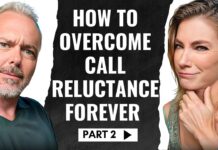Key Highlights
- As pandemic economy hardens, owning/renting model with both investor and owner capital could help encourage and maintain homeownership
- Hybrid could combine advantages of both owning and renting
- Would both sides win?
Millennials already had a hard road ahead in terms of becoming homeowners before the COVID-19 pandemic knocked every thing and every one into the wall. Crushing student loan debt, unaffordable housing options, stagnant wages, arrested career development resulting from the2008-2009 financial crisis, etc., and now unprecedented unemployment, shutdown/reduced pandemic economies, reduced if any wages, survivalist headsets, etc. all make homeownership dreams and goals even more difficult to actualize.
Download Your FREE Ultimate Agent Survival Guide Now. This is the exact ‘do this now’ info you need. Learn NOW How to Access All The Bailout Program Cash You Deserve. Including Unemployment and Mortgage Forbearance Plans. To Access the Ultimate Agent Survival Guide Now Text The Word SURVIVAL to 47372. 4 Msgs/Month. Reply STOP to cancel, HELP for help. Msg&data rates may apply. Terms & privacy: slkt.io/JWQt
Perhaps it’s time to expand our thinking about “home” from either owning or renting to some combination or hybrid of the two. An owning/renting model has been around for a while but perhaps now is the time to take a second or third look at this model.
Here’s how a common owning/renting model works:
- Companies co-invest with potential homeowners to get an ownership stake in the home
- Companies co-invest in homes by offering the buyer down payment assistance or providing a substitute for home equity loans
- The home buyer or existing homeowner receives cash (down payment help or equity loan help) in exchange for a share in the ownership of the home
- The co-investor then…
- Shares in the rising or falling value in the house
- May require some sort of flow of monthly payments from the occupant/buyer/owner
- These monthly payments are conveniently like rent payments and interest payments on a mortgage
- These monthly payments or a portion of these monthly payments can go toward increasing the occupant’s equity in the home, similar to principal payments on a mortgage
Here’s how the owner/renter hybrid works:
- The occupant never fully attains ownership but has the benefits of ownership AND renting.
- Occupant has the security of homeowner because she/he needn’t worry about the landlord renewing the rental contract or rising rents or having to come up with money to acquire full ownership
- Owner/renter hybrid similar to rent-to-own arrangements and shared appreciation mortgages.
- Owner/renter hybrid also similar to rent control
- Predictable housing costs over the long haul
- Resident protections (no threat of eviction) that instill sense of permanence in the occupant
- More affordable option over the long haul
- Less financial pressure on the occupant
With more people being able to participate in the housing market via this owner/renter hybrid model, demand for housing generally increases. Owners/renters squeeze more buying power out of their monthly housing budgets and, by doing that, they get more investor capital into the housing market.
If this owner/renter hybrid takes off, should we expect more Wall Street investment dollars owning larger pieces of America’s neighborhoods on top of what these investors already own in rental housing? If this hybrid takes off, will home pricing become mired in Wall Street’s erratic and more volatile markets?
Answers are ”to be determined” at this point but early indications point to owners doing better in the short term and investors doing better in the long term. We’ll just have to wait and see.
Thanks to The New York Times’ Issi Romem for bouncing around these ideas.
Also read: Time for Buyers To Drive Deals, Weekly Purchase Applications Recover as Rates Hit Record Low, NAR’s & Better Homes & Gardens Coronavirus Guidelines for Agents































